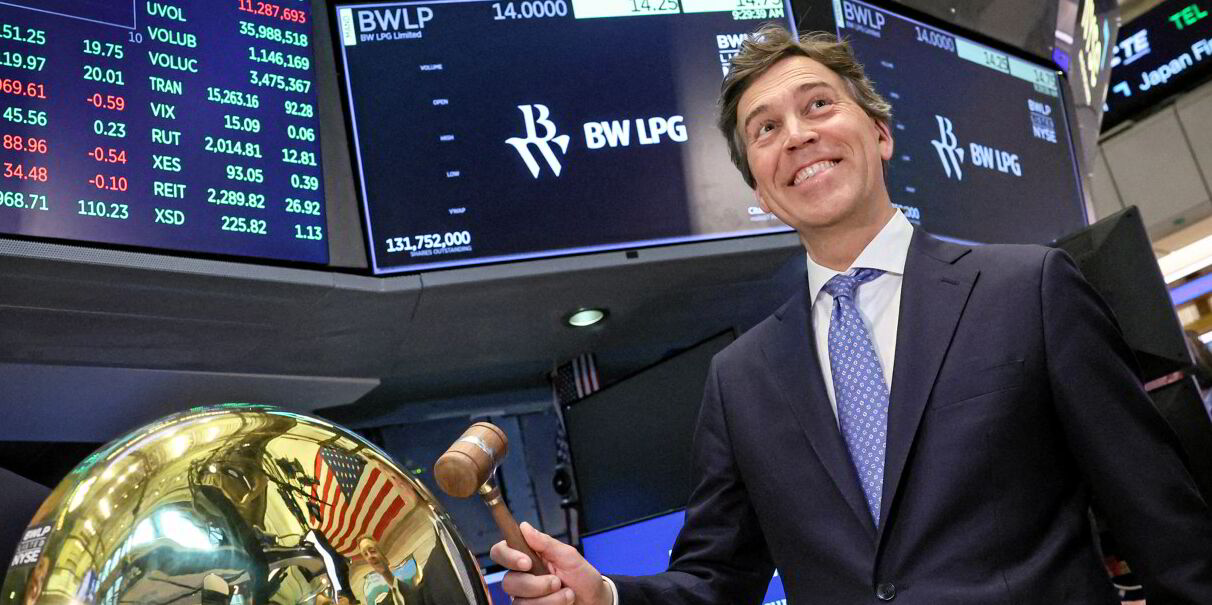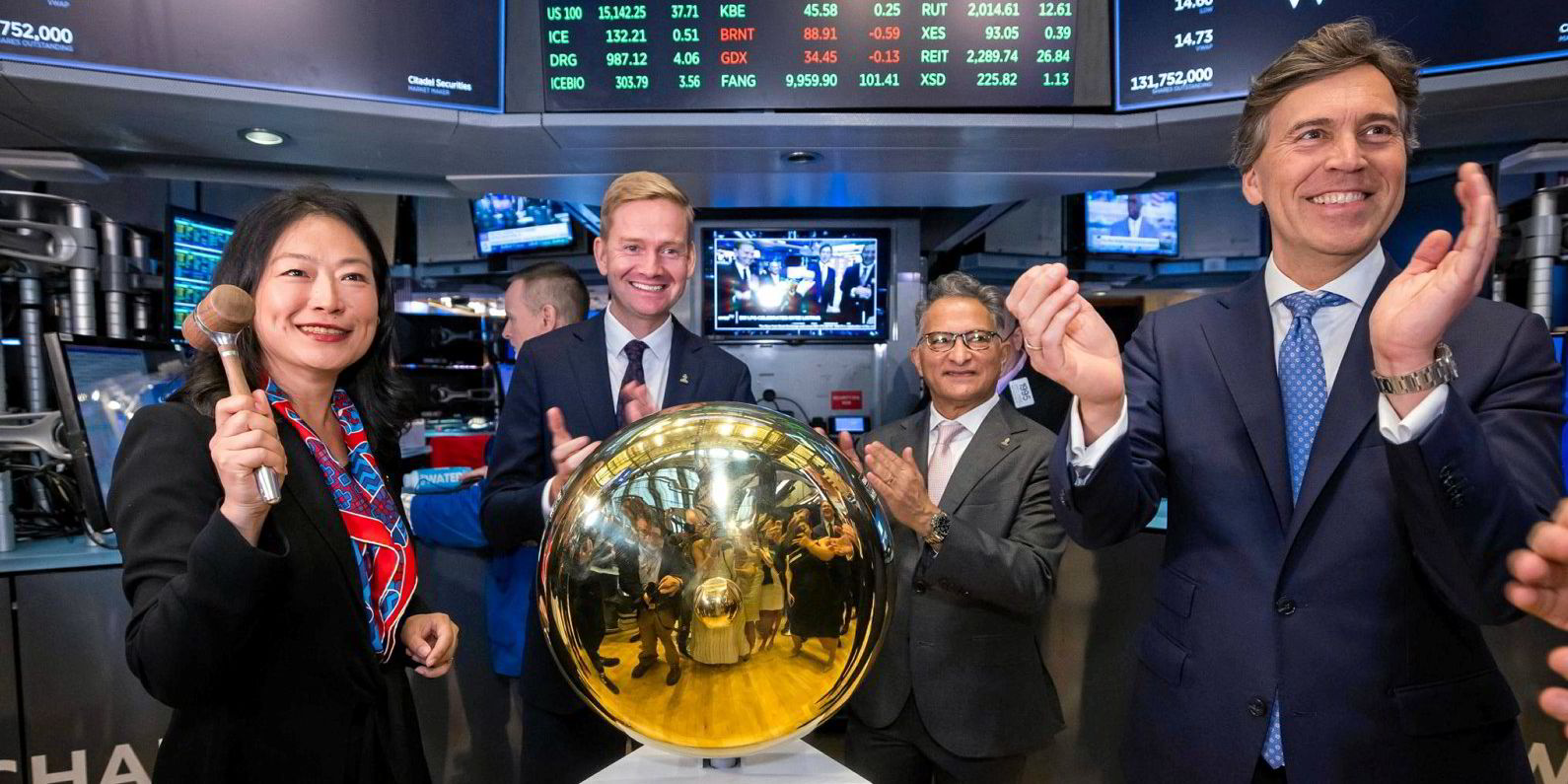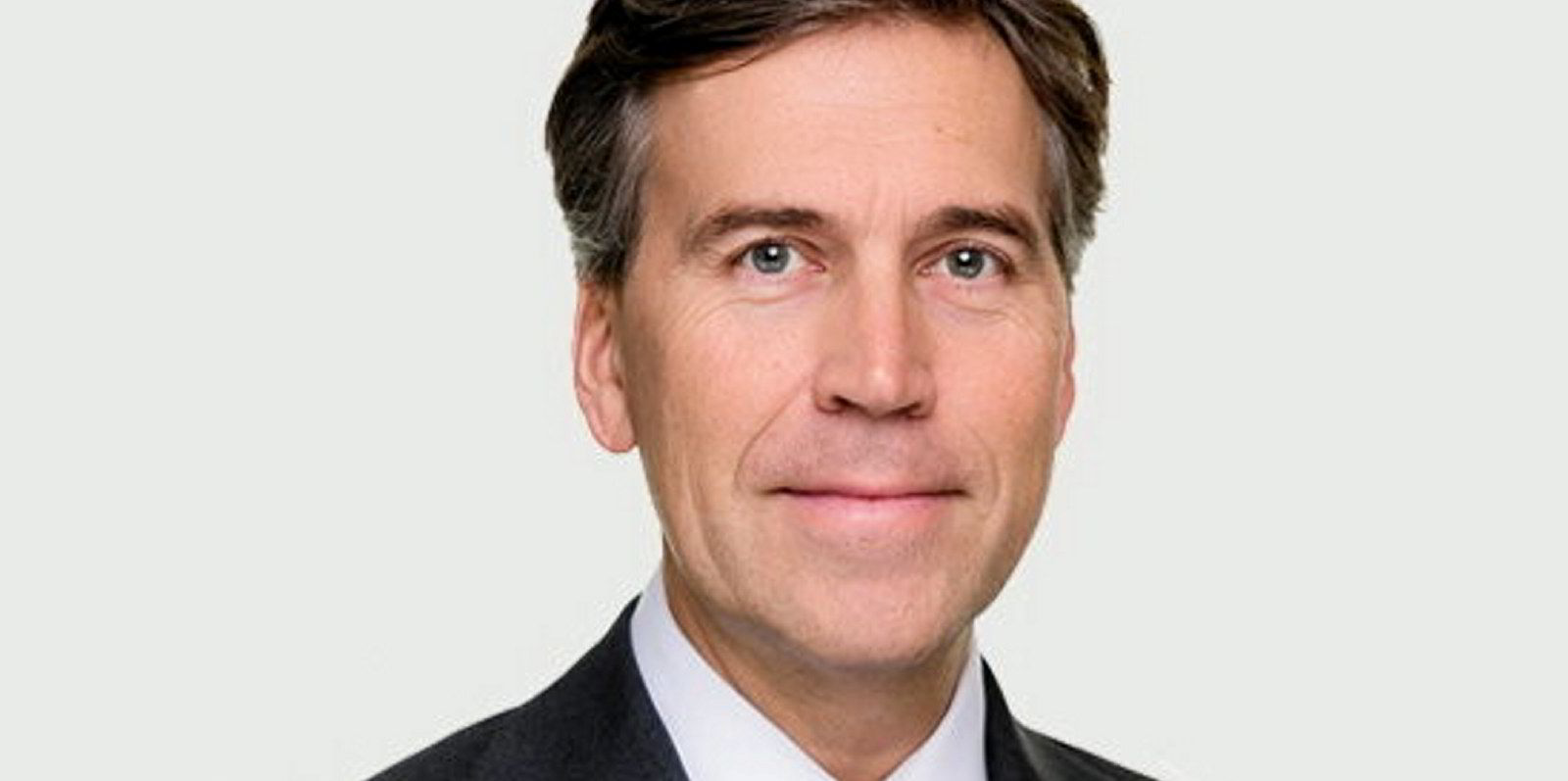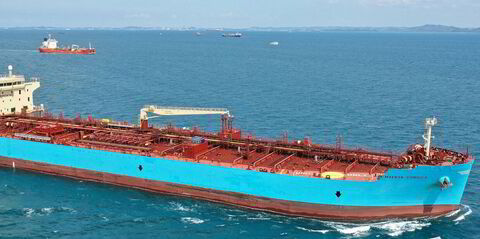BW LPG’s dual listing on the New York Stock Exchange has been a success story.
The Singapore VLGC owner completed its US listing on 29 April.
Following the move its shares traded on the Oslo Stock Exchange gained over 40%, reaching a peak at the beginning of June.
The share price has fallen a bit in recent weeks but is still up more than 20% since the listing.
“It has been a great journey for the company and our shareholders. And we believe a big reason for that is because we listed the company in the US,” chief executive Kristian Sorensen told TradeWinds in an interview at his office in Oslo.
BW LPG began the process of listing on the other side of the Atlantic about a year ago.
The company had reached a market capitalisation of more than $1bn, which makes it easier to attract institutional US investors.
“When we passed $1bn, we saw more US investors buying in Oslo. Size is important. You need a certain size to be visible in the US market,” Sorensen said.
Another reason for pursuing a dual listing was that BW LPG had started to build a higher dividend capacity and pay higher dividends.
“We are in a cycle where we generate considerable free cash flow and can pay dividends that US investors are attracted by. The dividend yield is a key figure that US investors are highly focused on,” he said.
In May, BW LPG declared a quarterly dividend of $1 per share, or $132m, representing 93% of total earnings.
The weakening of the Norwegian krone was another factor that contributed to the listing.
BW LPG’s main owner Andreas Sohmen-Pao has voiced concerns that the weak currency has been negative for Oslo-listed companies.
“Especially for foreign short-term investors it was a problem with a currency risk on top of the segment and general market risk,” Sorensen said.
In April, another BW Group-backed company, product tanker owner Hafnia, also registered a dual listing in New York.
Mikael Skov, chief executive of Hafnia, confirmed at the TradeWinds Shipowners Forum at Posidonia in Athens in June that discussions had taken place with the Oslo Stock Exchange to support trading in US dollars as well as kroner.
“The problem is the Norwegian krone, right? We were struggling a little bit with having a US dollar business all the way through, then suddenly having a share price in Norwegian kroner,” he explained at the forum.
By listing in New York, Sorensen also sought a higher valuation of BW LPG.
The company targeted to boost liquidity and close the valuation gap with New York-listed peer Dorian LPG.
“We could also see that Dorian had a better pricing of net asset value than we had. And much higher liquidity. There were several reasons to pursue a dual listing,” he said.
Since the listing, the gap to Dorian LPG has narrowed and the trading has increased.
After the first-quarter report, shares soared over 10% in New York as the daily liquidity was about 1m shares compared with 100,000 earlier.
BW LPG is now focusing on stabilising the high liquidity of the stock.
“You need a sufficiently high liquidity to attract big institutional investors. In their mandates, they often have a requirement of minimum liquidity. The higher liquidity the more they can invest in the stock. So it is a self-fulfilling prophecy,” Sorensen said.
The US listing has been very beneficial but being listed in Oslo is still important for BW LPG.
“This is not instead of Oslo. It is an addition. The Oslo listing still has a great value for us,” Sorensen said.
“The shipping equity research and investor base in Norway represents a very knowledgeable capital market cluster.”
Listing in New York also means costs in the form of money and time. Compliance with US regulations requires resources amid fierce competition in its capital markets.
“The US capital market is much bigger and deeper than in Europe. So you have to spend more time selling the company as an attractive investment than we are used to in Norway, where the capital market is much smaller,” Sorensen said.
“And shipping is not a big industry in the US. It is important to use time with investors and investment banks to market the company.”
DNB’s shipping analyst Jorgen Lian also views BW LPG’s US listing as a success.
“BW LPG is a fantastic example of how it worked. Dorian has been trading at a premium for a long time. After BW LPG did the dual listing, that gap is steadily shrinking. It shows the value,” Lian told TradeWinds.
A dual listing enables a company to reach two stock markets that complement each other.
“This side of the Atlantic focuses on net asset value and secondhand values. On the other side, investors look more at cash flow and yields. It can result in a huge impact on pricing,” Lian said.
“If a company has one foot on each side, it can always play on something. That is the big value of doing a dual listing,” he added.
The example of BW LPG could lead to other companies considering an additional listing.
“I think there is a great interest in dual listing when one sees it works. You reach a wider audience,” Lian said.
The third BW Group-backed company that has done a dual listing in New York in the past year is the offshore wind turbine installation vessel owner Cadeler.
Copenhagen-based Cadeler was listed in the US at the end of last year after merging with Eneti.
“We have seen more daily trading liquidity since the listing. That was our expectation because we did it in connection with the merger with Eneti,” Cadeler CEO Mikkel Gleerup told TradeWinds.
“So far it has been beneficial for the company and our investors. We are very happy to be listed in Oslo. But equally, we are also happy with the listing in New York,” Gleerup added.
Timing is crucial when listing in New York, according to BW LPG CEO Sorensen.
For BW LPG, it was the perfect moment with strong shipping markets, a larger market capitalisation and a dividend yield story, which is marketable to investors.
“Through the New York listing we diversify us from many other Oslo-listed shipping companies and we believe you are more investible if you are listed in New York as it opens up a much larger investor universe,” Sorensen said.






